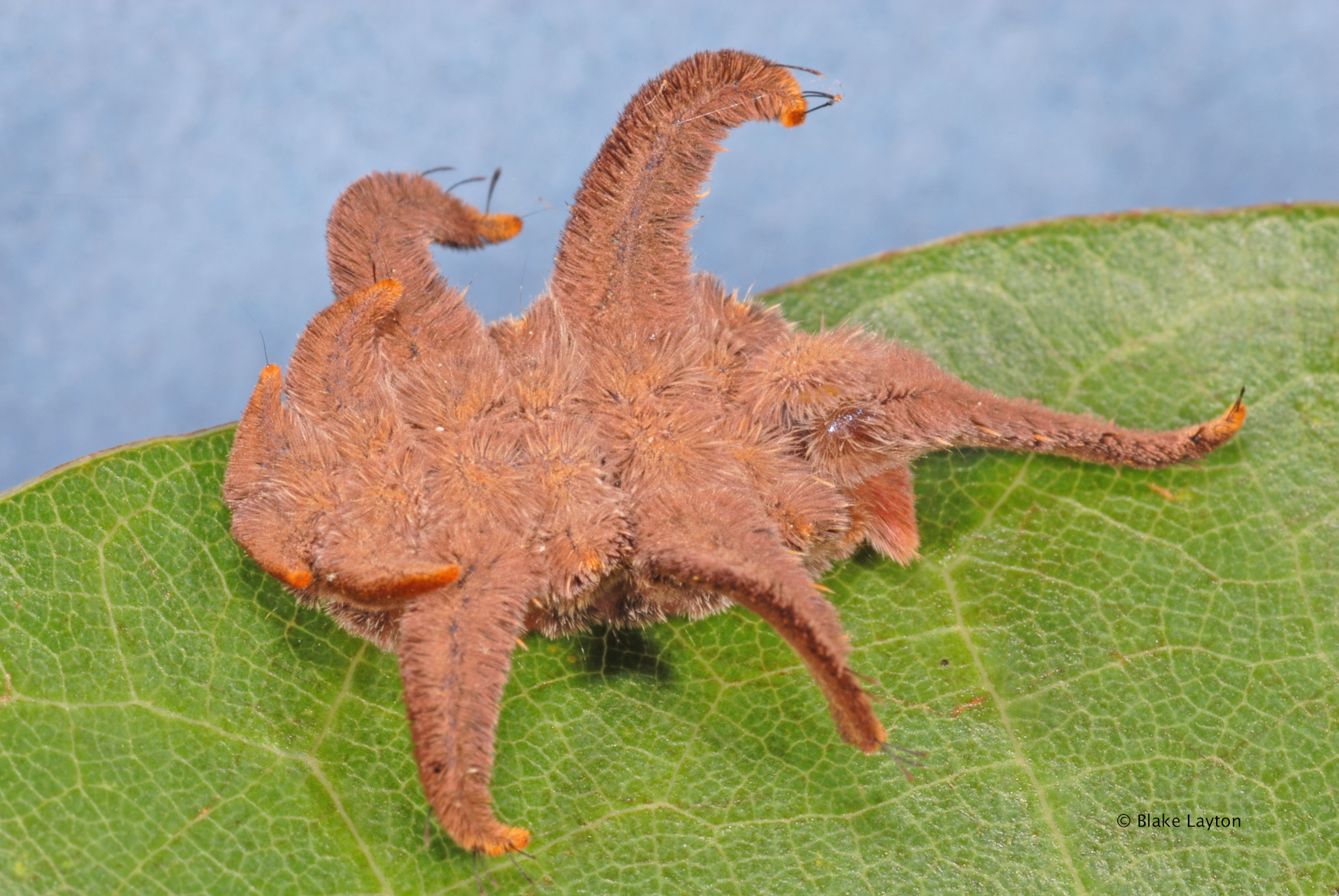Monkey Slug, Vol. 10, No. 13
Related News
July 10, 2015
June 29, 2015
June 17, 2015

 “What on earth is this thing?!”
“What on earth is this thing?!”
This is a normal response from someone who encounters a monkey slug for the first time, and it usually is both a question and an exclamation. After all, they certainly don’t look like caterpillars—or any other animal most folks have ever seen.
Monkey slugs are caterpillars of hag moths, which belong to a family of moths whose caterpillars are known for their unusual appearance, odd mode of locomotion, and ability to cause stings if mishandled. Saddlebacked caterpillars, stinging rose slugs, and puss caterpillars are three other members of this family.
Caterpillars in this family are collectively known as slug caterpillars because they don’t walk like normal caterpillars. Their true legs and prolegs are greatly reduced, more like suckers than legs, and they move in a gliding, slug-like motion. Another trait common to slug caterpillars is that their head is deflected downward, making it difficult to see when viewing the caterpillar from above (head is to the left in the photo, but not visible).
Most slug caterpillars have tubercles or protrusions on their body that are often adorned with or accompanied by stinging spines, but the long wavy, hair-covered “arms” of monkey slugs are unique. There are nine pair, with three usually being longer than the others, especially in the later instars. Along with the brown hair covering the body, these provide great camouflage because a resting caterpillar looks more like a dried leaf or bit of dead brown plant material than a tasty snack for a bird. If a bird does sample one, the arms break off without harm to the caterpillar, and thus serve as sacrificial decoys, much like the tails of some lizards. Note the caterpillar in the photo is missing one of the rear pair.
Monkey slugs feed on leaves of hardwood trees and shrubs, such as ash, apple, dogwood, oak, persimmon and more. They are not uncommon but are rarely noticed because their camouflage works so well. Mature caterpillars are about 1 inch long and pupate in a cocoon formed in leaf litter on the ground. The adults are small, uncommonly hairy moths, with stout compact bodies, traits also shared by moths of other species in this family.
Like most limacodid caterpillars, monkey slugs have stinging spines and can cause stings or dermatitis, though their stings are reported to be milder than those of some other slug caterpillars. There is some discrepancy in personal reports. Some folks say they can’t sting, while other say they can. Both reports are probably true because folks are pretty good at knowing whether or not they feel a sting. This could be related to how firmly the caterpillar was pressed against the skin, and where, both on the body of the caterpillar and the person, this contact occurred, as well as to differences in personal sensitivity.
Thanks to Dr. Jeff Willers for providing this monkey slug caterpillar to photograph.
Blake Layton, Extension Entomology Specialist, Mississippi State University Extension Service.
The information given here is for educational purposes only. Always read and follow current label directions. Specific commercial products are mentioned as examples only and reference to specific products or trade names is made with the understanding that no discrimination is intended to other products that may also be suitable and appropriately labeled.
Bug’s Eye View is now on Facebook. Join the Bug's Eye View Facebook group here.